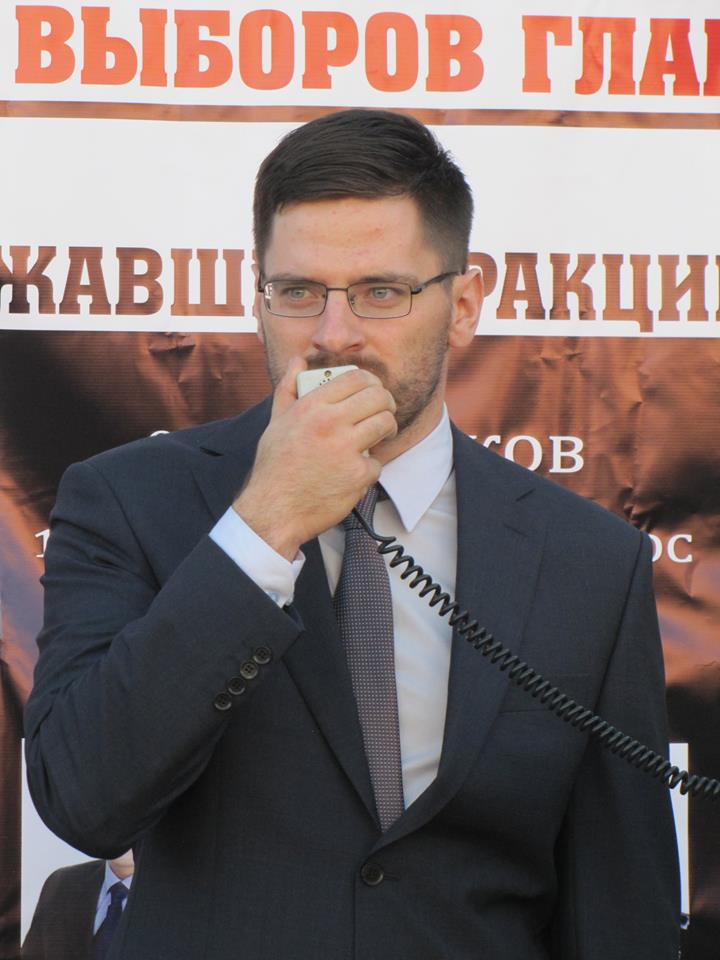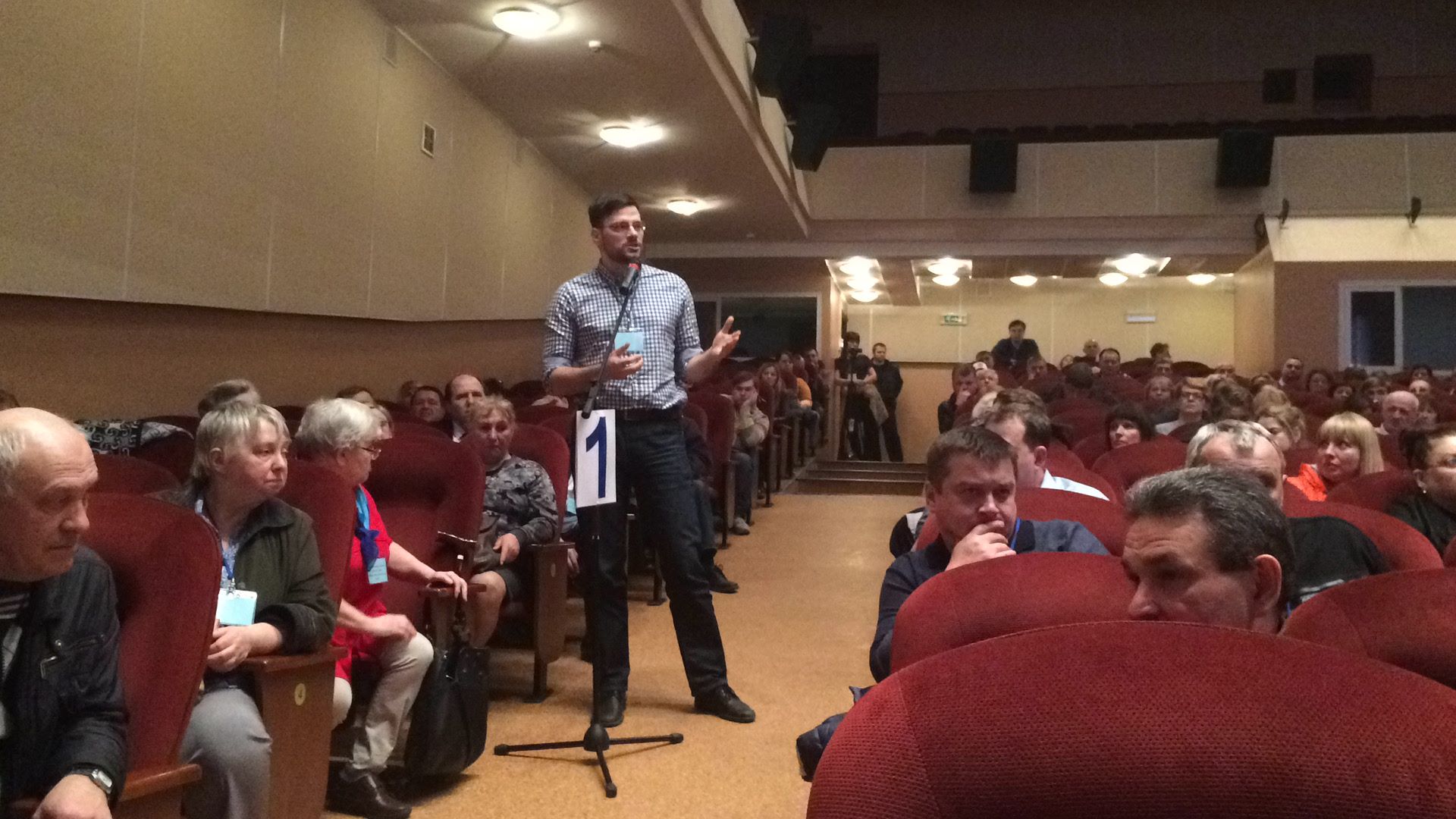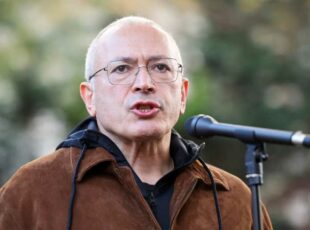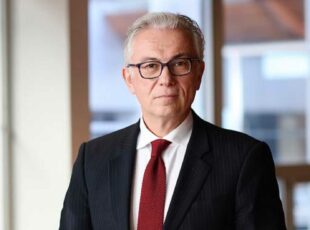Standing up to the bureaucrats
The problem of upgrading communal areas in Moscow Region is acute. Thanks to the bureaucrats and the system they protect.

Andrei Shalnev
The problem of upgrading communal areas in Moscow Region is acute. Things are often so bad that locals often hot-foot it through the yard to take refuge inside their flats. The notion of a livable urban environment is a dreamland for many. To tackle the problem, in 2015, Governor of Moscow Region Andrei Vorobyov, adopted a law to give communal areas around Moscow a facelift. The “all-round urban improvement” plan comprises six main elements:
- Children’s soft-surface play areas
- Asphalted passageways between apartment blocks
- More parking spaces (if necessary)
- On-site skips
- Landscape gardening
- And, last but not least, PR stands for the governor’s “Our Moscow Region!” programme.
Although decisions like this should not be top-down, the idea is commendable. Before, it was a case of “Let’s build a playground, never mind the puddles and parked cars.” No one needs or wants a yard like that. All-round urban improvement aims to solve the problems of individual yards without padding out the budget, delivering a livable space as the end product. Unfortunately, the programme is not up to scratch at the local level.
The first problem, as ever, is that those who belong to the old system don’t grasp the concept of ‘all-round’ improvement
The first problem, as ever, is that those who belong to the old system don’t grasp the concept of ‘all-round’ improvement. Revamped communal yards still resemble a jumble of disparate elements. Forethought is an afterthought, so to speak. Officials are focused on tapping the allocated funds, not on delivering comfort and convenience. They don’t produce blueprints, don’t plan ahead and, crucially, don’t ask residents what they would like to see.
On the fly
The construction team is basically handed a clean slate. They come, they see, and they pull out a list of works to be done. The layout is pretty much designed on the fly. And the inevitable result is a mass of iron atop a rubbery surface, totally missing the point of the makeover: to create a space that attracts people.

It’s a common problem for the region. In Korolyov, for instance, money is thrown at urban improvement, although you wouldn’t know it. At local meetings I’ve been told of cases where people asked for a sports area, and were given a children’s playground. In Sergiev Posad the problems run deeper. Only the centre of town offers a glimpse of any improvement, while moving away from Red Army Avenue, the central thoroughfare, you won’t see anything. Despite the tourist value of the centre, the city looks decidedly neglected.
I’ve yet to encounter a strategic approach; instead, it’s all about budget allocation.
I’ve yet to encounter a strategic approach; instead, it’s all about budget allocation. Every day I meet with residents in Korolyov and the districts of Pushkino and Sergiev Posad, where the communal yards are clearly divided into those that haven’t had a makeover (which people want to see done) and those that have – which people want to see undone, citing noise and the risk of getting smacked in the face by a ball. It’s no surprise that people become disillusioned and cynical after such ‘improvements.’
That’s the crux of the matter: taxpayers’ money is allocated, but people end up dissatisfied. A different approach is needed. First, public meetings should be held for people to voice their opinions, followed by planning and approval of the project. And architects should be involved to make sure people get what they want.
Maintenance
Once a new site is laid out, the local council basically forgets about it. Instead of ongoing maintenance, we get a complaints system.
The following is all too common: someone calls to report a broken slide; it can’t be repaired so it’s taken away and, hey presto, there’s no slide. No one knows when it will be replaced because that requires money and budget adjustments. At best, a new slide might arrive the following year.
Issues like this also need a bit of forward planning. Experts and local residents need to be involved. And funds for basic repairs should be earmarked in advance.

Regional issues
The above are not the only problems. All-round urban improvement assumes additional financing from the city budget and the Moscow Region budget. Pushkino’s local council, including myself, thought long and hard about how best to allocate resources and decided to surface communal areas with city funds and ask the regional authority to finance the paving of roads, driveway repairs and the construction of new parking spaces.
The procedure for obtaining money from the regional authorities is quite opaque
The procedure for obtaining money from the regional authorities is quite opaque. If a district has poor relations with the regional authority, the approval process can drag on for months. Sometimes a local paper might announce a new improvement project, but report in the same breath that the region is refusing to stump up the cash to lay asphalt. Often it’s a fundamental issue. For example, at one particular yard in Pushkino the main job was to install a storm-water drain. The city allocated money for the urban facelift, but the regional authority refused to pay for a drain, so the result will be an underwater yard.
Daring to be different
Another problem is that yards and playgrounds tend to be bog-standard and rather boring. Why do they all have to look the same?
In 2016, every MP, or deputy, in Pushkino was allocated a million roubles to implement voters’ requests. Our administrative unit is home to five deputies, and we decided to spend the money in a coordinated fashion. One-and-a-half million we decided to allocate to the improvement of two communal areas. I involved architects in the planning stage, and instead of standard plastic, we wanted the playgrounds, benches, etc. to be made of solid wood, like in Scandinavia – something that would transform the urban landscape. Naturally we discussed everything with the locals. They gave the thumbs-up, but didn’t believe it would go ahead.
The bureaucrats are trying to get us to scrap the idea and go for a standard design
The district administration said the project should be up and running by the end of September, but the bureaucrats are trying to get us to scrap the idea and go for a standard design, inventing a raft of pretexts as to why it can’t be done. They want to tender everything out as a single lot, because a clause of the federal law on public procurements states that for children’s playgrounds procurements should not be divided into multiple lots. This plays into the hands of large firms that mass-produce playground and communal area facilities. It is well known what people think of them and how long they tend to last.
But my team and I were able to break the pen-pushers, and the plans we sketched out with local residents have been given the all-clear. My goal now is to launch two pilot projects in Pushkino to showcase different types of communal area. It will jolt people out of their slumber and encourage them to participate in improving their residential yards and amenities.
Changes at the top
If I get elected, the first thing I intend to do at the federal level is propose changes to the above-mentioned law on public procurements. Second, I want to involve the architectural and town-planning community, and develop guidelines that could be applied to all municipalities in Moscow Region. “How can we solve the problem of children’s playgrounds in the State Duma,” you might ask, but children’s playgrounds are where the country’s future engineers, doctors and teachers grow up. If the problem cannot be solved at the local and regional levels, we have to go federal.
Sure, people won’t change overnight, but you have to start somewhere. I don’t believe that officials always have to do a bad job; it’s just they’ve never been taught to do anything else. What we’re talking about is unlocking people’s creative potential.
Andrei Shalnev is standing as a candidate for the Duma, in Sergiev Posad, Moscow Region; his candidacy is being supported by Open Russia



